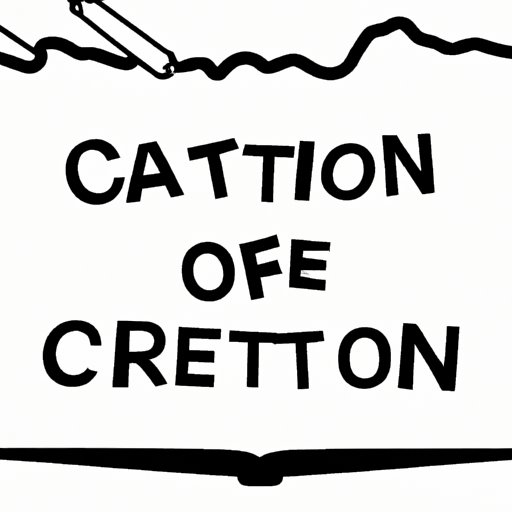Introduction
Creative nonfiction is a genre of storytelling that combines elements of fact and fiction to tell true stories in a compelling way. It is a form of writing that utilizes the techniques of fiction, such as characterization and plot, to tell real-life stories. Creative nonfiction is often categorized into several different genres, including memoirs, personal essays, narrative journalism, travel writing, and more.
Writing Creative Nonfiction
An introduction to writing creative nonfiction starts with understanding the basics of the genre. Creative nonfiction is a combination of facts and imagination, so it is important to distinguish between what is true and what is fictionalized. When writing creative nonfiction, writers should strive to be accurate in their depictions of people, places, and events while also using literary devices to bring the story to life.
There are many strategies for crafting compelling creative nonfiction. Writers should focus on “showing” rather than “telling” by using sensory details and vivid imagery to engage the reader. They should also strive to create a sense of immediacy by writing in present tense, and they should use dialogue to help the reader connect with the characters. Additionally, writers should pay attention to the structure of their stories by using a beginning, middle, and end.
Creative Nonfiction: A New Way to Tell True Stories
Reading and writing creative nonfiction can be beneficial in a number of ways. It allows readers to feel connected to the characters in the story and to gain insight into how other people live. For writers, it provides an opportunity to explore their own experiences and to share their stories with others. Additionally, creative nonfiction can be used to shed light on social issues and to document history.
Examples of creative nonfiction include books such as Wild by Cheryl Strayed, The Glass Castle by Jeannette Walls, and Into the Wild by Jon Krakauer. These books combine facts and fiction to tell powerful stories about real-life people and experiences.
Conclusion
In conclusion, creative nonfiction is a genre of storytelling that combines elements of fact and fiction to tell true stories in a compelling way. Writing creative nonfiction requires balancing accuracy with literary techniques, and it can be beneficial for both readers and writers. Examples of creative nonfiction include books such as Wild, The Glass Castle, and Into the Wild.
If you are interested in writing creative nonfiction, it is important to remember that your story should be grounded in truth but also filled with emotion and detail. Additionally, pay attention to structure and use dialogue and sensory details to bring your story to life. By following these tips, you will be able to craft a compelling creative nonfiction piece.
(Note: Is this article not meeting your expectations? Do you have knowledge or insights to share? Unlock new opportunities and expand your reach by joining our authors team. Click Registration to join us and share your expertise with our readers.)
